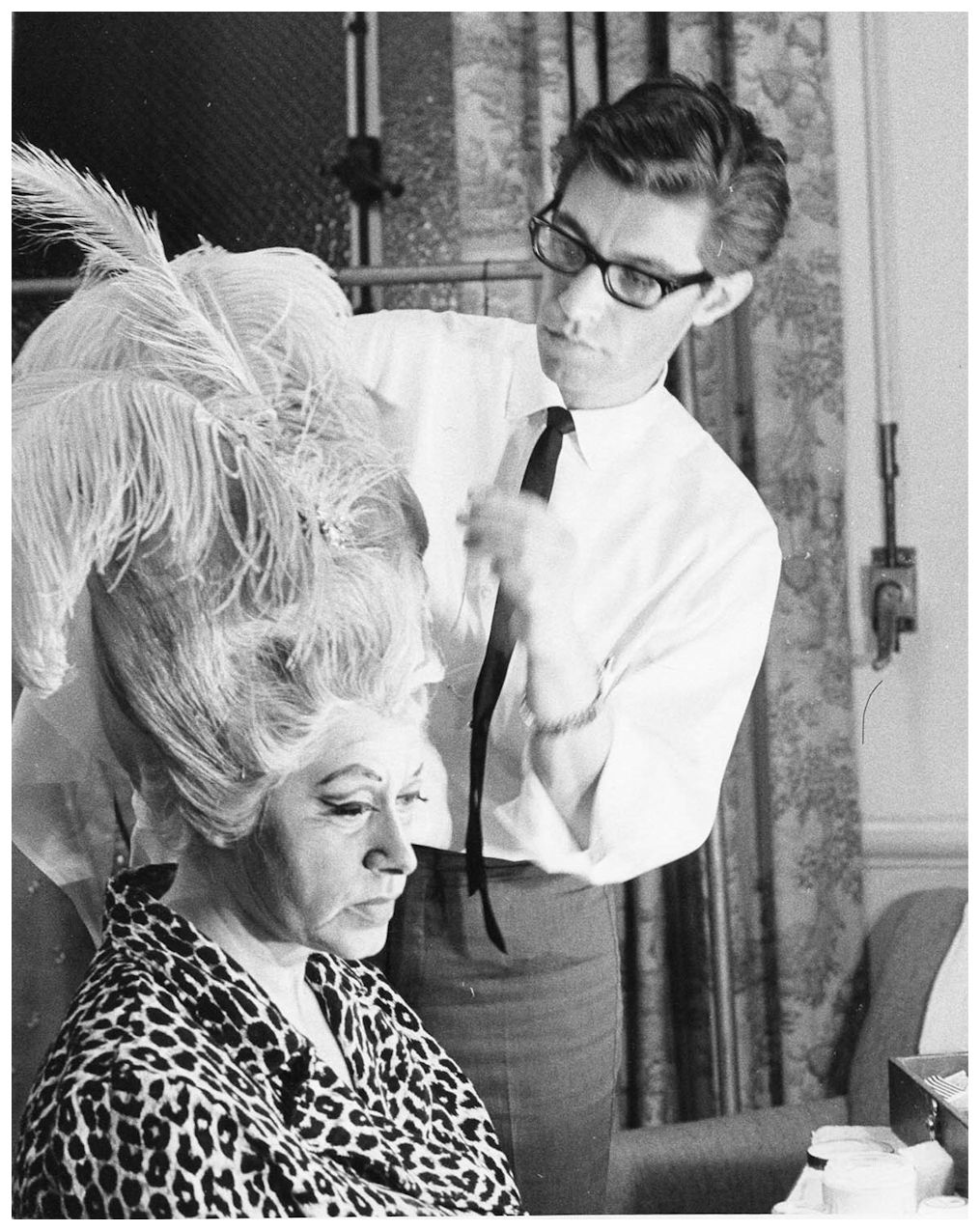
Dufford preparing Regina Resnik for her role in The Queen of Spades at the San Francisco Opera.
(All other photos on this webpage are from Lyric Opera of Chicago.)

|
Stan Dufford was responsible for the wigs and makeup at Lyric Opera of Chicago from 1972-2000. Before that, he did the same at the San Francisco Opera from 1956-1968. As an introduction and brief biography, what is
presented below in this box is an edited version of an article which
appeared on the San Francisco Opera Blog. * *
* * * Dufford was born in San Francisco, but his parents moved the family out to a farm in Lake County, California, when Dufford was young. It was an isolated existence. There was only one movie theater in the entire county. All the films were in black and white, and society was scarce. His graduating class numbered 18, out of a total student body of 75. But a makeup box he discovered in the school book room changed the course of his future. At night, he would practice painting his face alone in the mirror. Eventually, he ordered a kit from the cosmetics company Max Factor, using its instruction manual to educate himself on technique. It took him a while to warm to opera, though. When he was around 12 years old, he remembers attending a student matinee of Aïda. By the time he reached high school though, his tastes had changed. He listened to the Metropolitan Opera broadcasts on Saturday afternoon. At the University of California, Berkeley, his passion for both makeup and opera flourished. He dropped chemistry as a major — though he still used the skills he picked up to mix body paint — and instead spent his time doing makeup for the drama department. His roommate would spin opera records, and in his senior year, a friend convinced him to go see Don Giovanni at San Francisco Opera. They found a perch at the very top of the opera house, where the sound was the fullest. It was one of his first experiences with the institution that would become his office. Outside of the occasional course in historical costuming, Dufford found that he had to teach himself the techniques that would ultimately be his bread and butter. There were no YouTube tutorials, no specialized courses for his career path. He also did not receive a lot of support from his family. But even in unexpected places, Dufford found opportunity. During the Korean War, he enlisted in the Navy and was stationed in San Francisco. When he mentioned to a superior officer that he wished to see real kabuki theater, the officer arranged for him to travel to Japan. While abroad, he picked up books about how to create traditional Japanese hairstyles and kabuki makeup, as well as materials so he could practice at home. This all came in handy when he auditioned to work at San Francisco Opera. After four years in the Navy, Dufford had returned to pursue graduate-level work at San Francisco State University. That’s when a call came in. The opera was looking for a wig maker. Though Dufford considered himself primarily a makeup artist, he had taught himself the basic wig-making knot, and decided to apply. At the audition, a stage manager escorted him to the theater basement. In the crates of extremely old-fashioned wigs, he pulled out three. Two were 18th-century-style powdered wigs, and the other was this mass of black hair, sewn in circles around the cap. The stage manager left, and Dufford had to show what he could do. He remembers fluffing up the white wigs and using the Japanese techniques he learned on the black one. It landed him the job. But that was only the start of the challenge. In becoming San Francisco Opera’s new wig master, and later its makeup master as well in 1962, Dufford had inherited a department woefully lacking in resources. He suspects someone had absconded with the company’s best wigs before he arrived. The shortages forced Dufford to improvise. He had arrived only about a month before the start of a new season, and it could take five days to make a single wig. Where he could, he added highlights to revive older models, but some wigs required more drastic intervention. As a profession, hair and makeup did not command the same respect as it does now. Dufford received very little forewarning about the company’s plans for opening night. He received no cast lists, no numbers, and no measurements to prepare for the wigs. So when choristers arrived at his door to get ready for the Manon Lescaut dress rehearsal, he had to sort out who was who among noblemen and townspeople. He also picked up tricks from big-name stars, some of whom were used to doing their own hair and makeup. Touring opera stars even, on occasion, brought their own costumes, a tradition rapidly going out of date. Dufford picked up tricks, like back-combing, from greats like soprano Elisabeth Schwarzkopf, who always instructed him to make her wigs taller. His entry into opera also coincided with a time of increasing integration in the field. That forced him to seek out palettes that would suit more skin tones. Dufford considers the stylized wigs he constructed in the 1960s among the highlights of his career, a testament to his creativity against stiff odds. But by 1968, he was ready to move on. For the next few years, he worked for commercials and movies. He also started pursuing hair and makeup as an academic discipline. He was fascinated with the evolution of the medium, and even published some of his research in the Encyclopedia Britannica. By 1972, he was back in the opera house, this time with the Lyric Opera of Chicago. There, he would spend decades respected at the top of his craft, until his retirement in 2000. But after retirement, Dufford felt like a man without an identity. So he returned to San Francisco, where he helps preserve the history he witnessed firsthand, as a volunteer in the San Francisco Opera archives. |
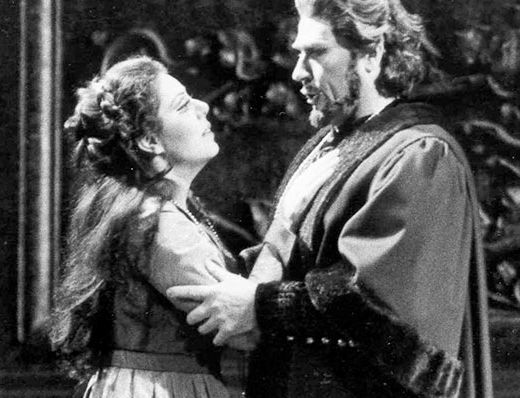 As we settled in for the chat, he spoke of the flexibility needed
to accomplish all of this . . . . .
As we settled in for the chat, he spoke of the flexibility needed
to accomplish all of this . . . . .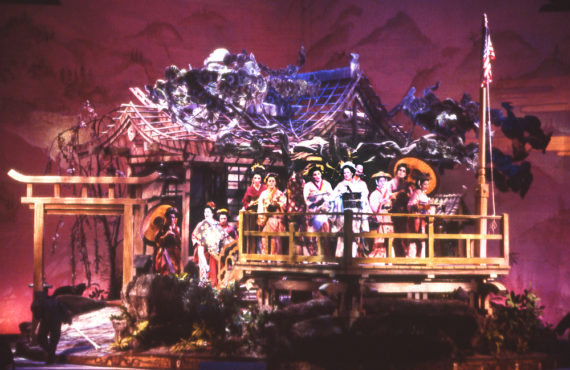 BD: [Surprised]
There was not a showbook with the old sets?
BD: [Surprised]
There was not a showbook with the old sets?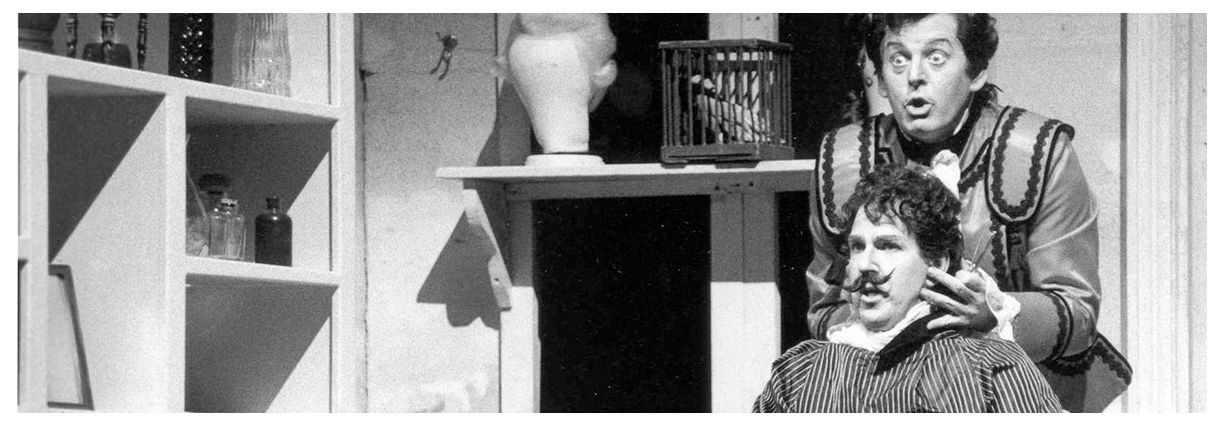
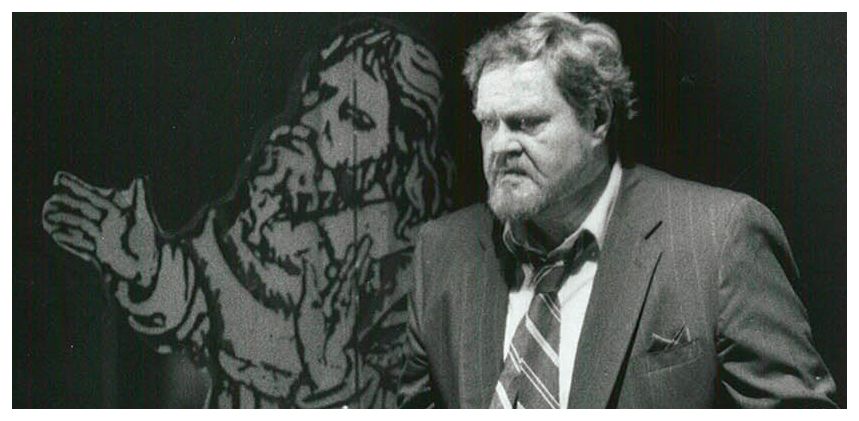
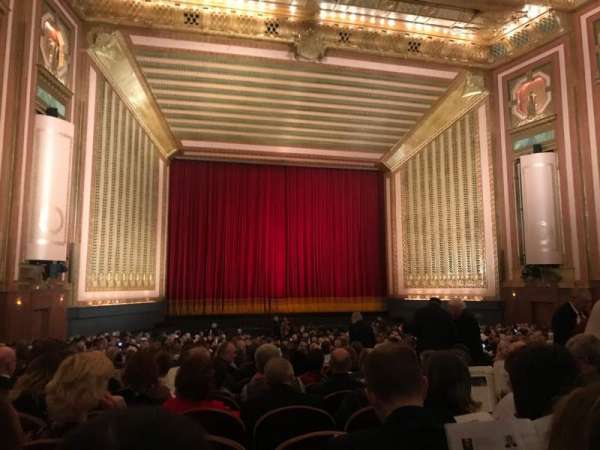 BD:
I assume then you just sit in the sidelines and let them fight it out?
BD:
I assume then you just sit in the sidelines and let them fight it out?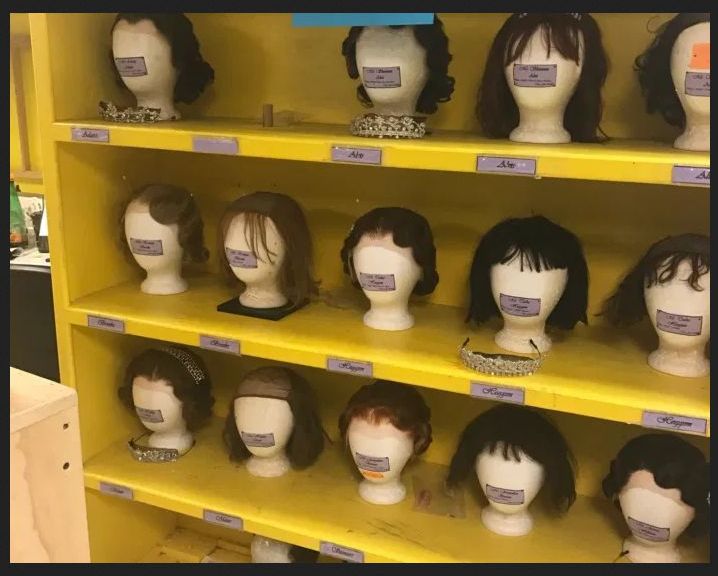 Dufford:
More time on the wigs, much, much more time. It takes an average
of five days to tie the hairs into a wig, and that’s not counting the
time for making a custom-made foundation to fit a person’s head exactly.
It also doesn’t count time for styling. Makeup is done fairly
much at the last minute. There is planning, certainly, and designing,
and that takes time, but the bulk of it is spent on the wigs.
Dufford:
More time on the wigs, much, much more time. It takes an average
of five days to tie the hairs into a wig, and that’s not counting the
time for making a custom-made foundation to fit a person’s head exactly.
It also doesn’t count time for styling. Makeup is done fairly
much at the last minute. There is planning, certainly, and designing,
and that takes time, but the bulk of it is spent on the wigs.
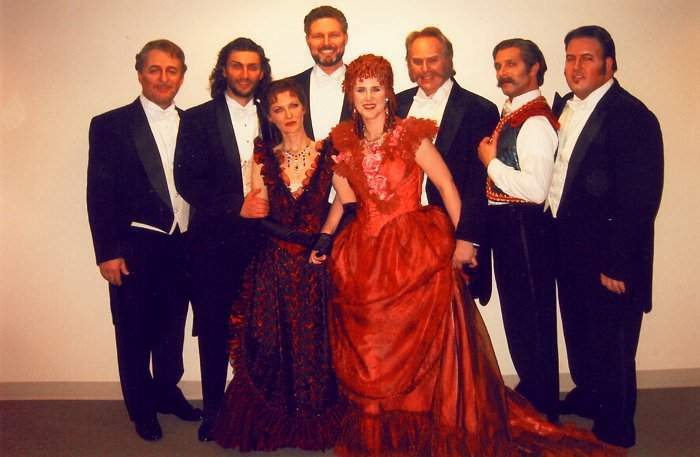
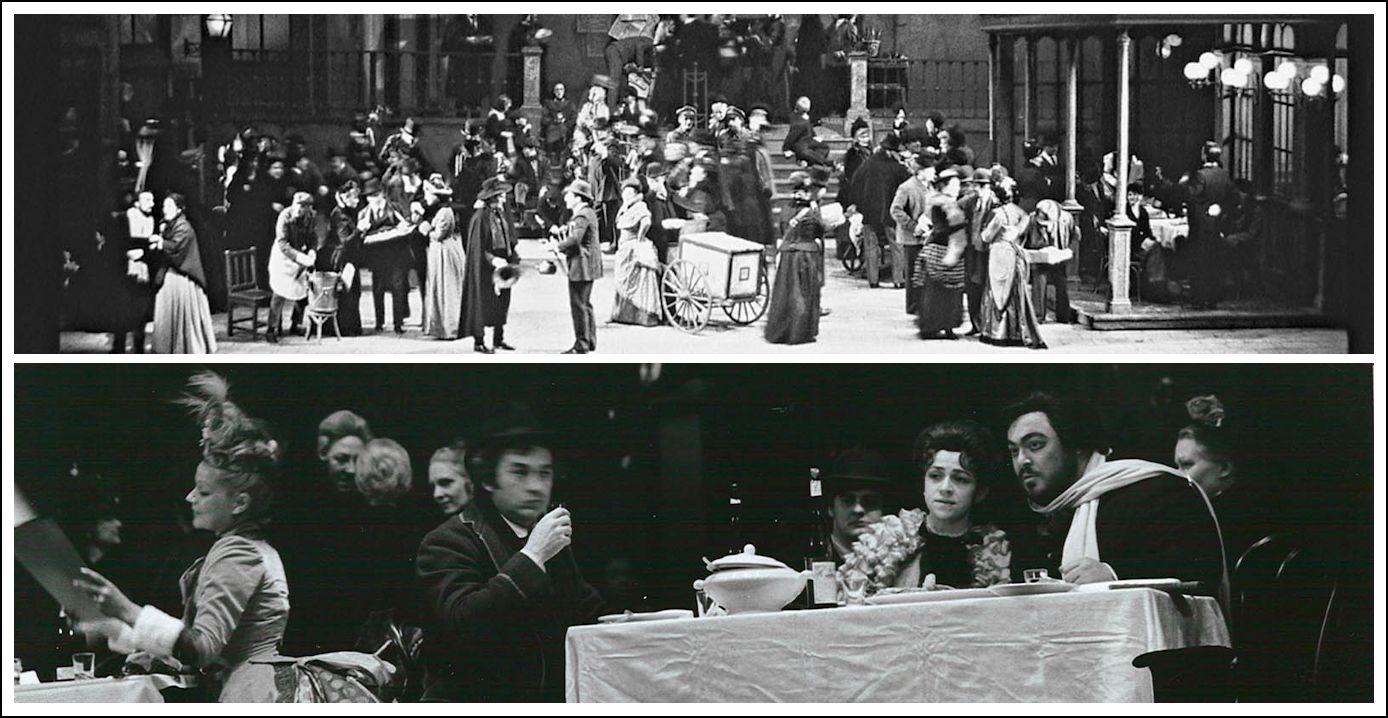
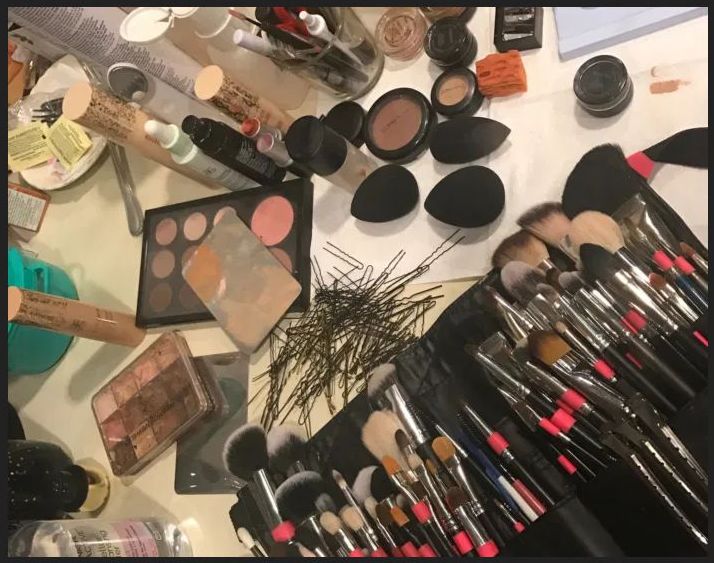 BD: Do you get inspired by the music?
BD: Do you get inspired by the music?
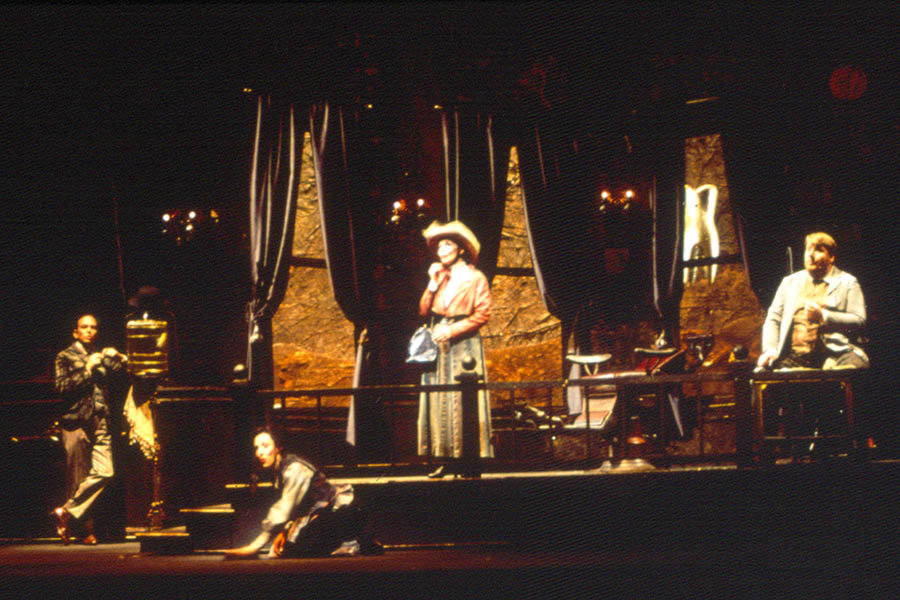
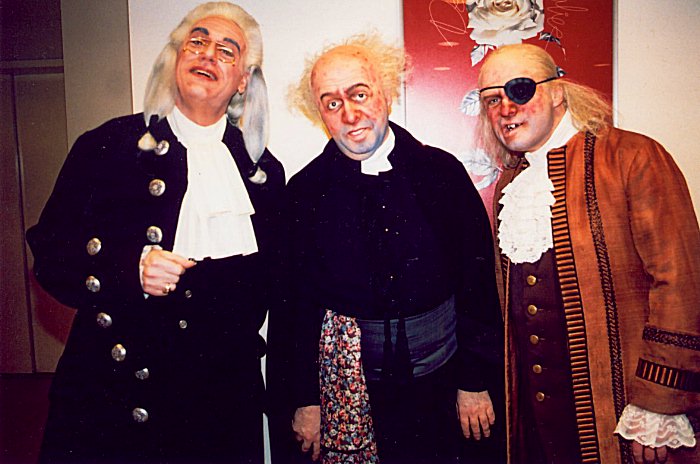 BD: Do you work with Duane Schuler a lot on this,
or do you just hope that he doesn’t destroy what you’re doing? I
assume he hopes that you don’t destroy what he’s doing...
BD: Do you work with Duane Schuler a lot on this,
or do you just hope that he doesn’t destroy what you’re doing? I
assume he hopes that you don’t destroy what he’s doing...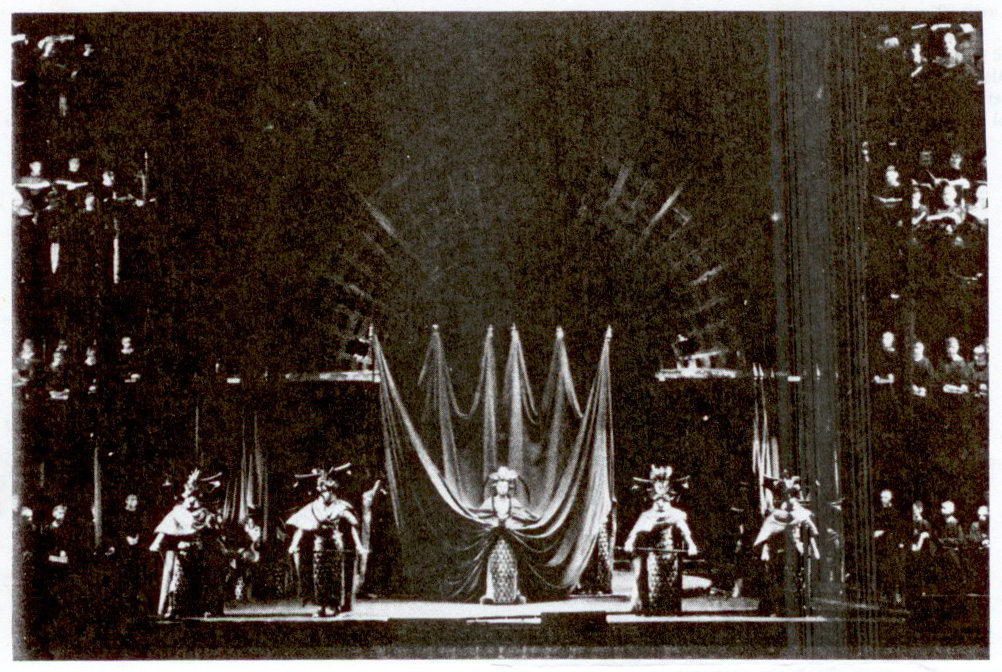
© 1998 Bruce Duffie
This conversation was recorded backstage at the opera house in Chicago on August 7, 1998. Portions were broadcast on WNIB four months later, and again in February of 1999. This transcription was made in 2021, and posted on this website at that time. My thanks to British soprano Una Barry for her help in preparing this website presentation.
To see a full list (with links) of interviews which have been transcribed and posted on this website, click here. To read my thoughts on editing these interviews for print, as well as a few other interesting observations, click here.
Award - winning broadcaster Bruce Duffie was with WNIB, Classical 97 in Chicago from 1975 until its final moment as a classical station in February of 2001. His interviews have also appeared in various magazines and journals since 1980, and he now continues his broadcast series on WNUR-FM, as well as on Contemporary Classical Internet Radio.
You are invited to visit his website for more information about his work, including selected transcripts of other interviews, plus a full list of his guests. He would also like to call your attention to the photos and information about his grandfather, who was a pioneer in the automotive field more than a century ago. You may also send him E-Mail with comments, questions and suggestions.